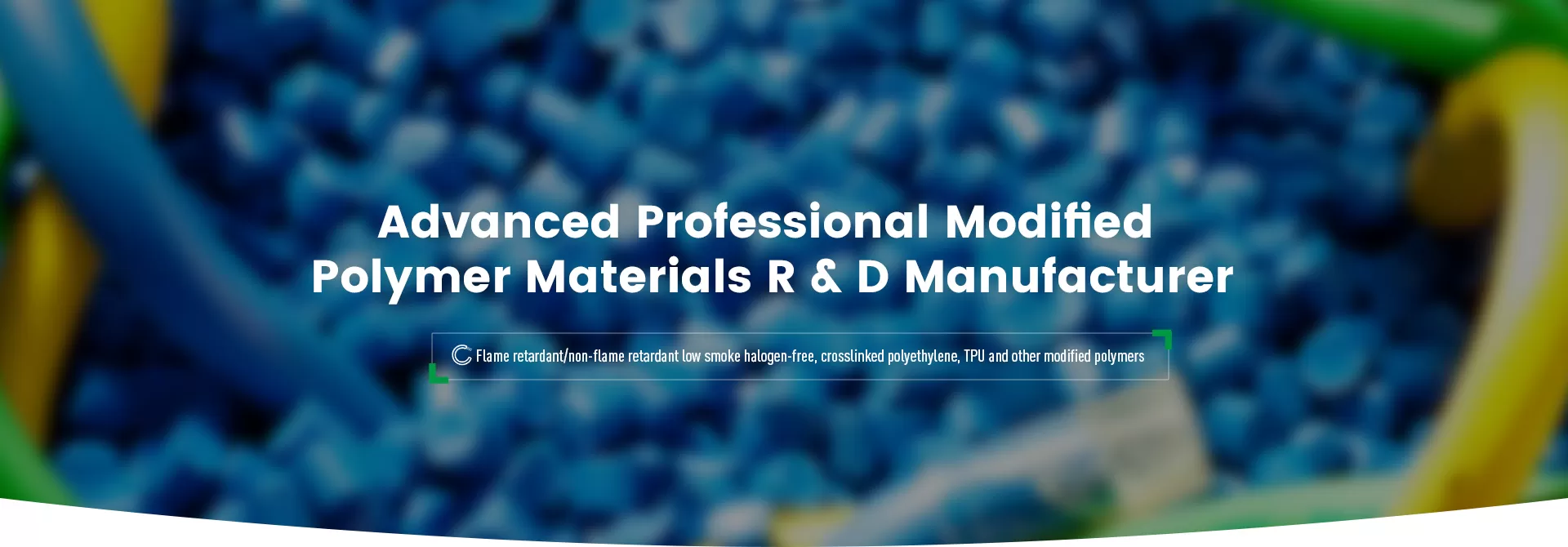
With the rapid development of railway transportation and the continuous improvement of environmental protection and safety standards, railway locomotives have become more stringent in terms of performance requirements for cable materials. Traditional polyvinyl chloride (PVC) materials are gradually being replaced by new materials that are more environmentally friendly and have higher performance due to problems such as halogens and the release of toxic gases during combustion. Among them, low-smoke halogen-free cross-linked polyolefin cable materials (LSZH XLPO) have been widely used in railway locomotive cable systems due to their excellent flame retardancy, low smoke, mechanical strength and environmental protection properties.
This article will systematically analyze the application value, technical advantages and future development prospects of low-smoke halogen-free cross-linked polyolefin materials in the field of railway locomotive cables.
Railway locomotive cables must cope with harsh environments such as high temperature, vibration, corrosion, radiation and long-term workloads during operation. Its performance requirements mainly include:
High flame retardancy and low smoke toxicity: no thick smoke and toxic gas will be generated in the event of a fire;
Excellent electrical insulation performance: prevent arcing, electric shock and electromagnetic interference;
Good mechanical properties: wear resistance, tensile strength, compression resistance, and adaptability to high-frequency vibration of railways;
High temperature aging and weather resistance: suitable for outdoor scenes with frequent high and low temperature changes;
Environmental compliance: meet the requirements of EU RoHS, REACH and other environmental regulations.
Low smoke halogen-free cross-linked polyolefin (LSZH XLPO for short) is a polyethylene or polypropylene based material that enhances its thermal stability through irradiation or chemical cross-linking technology. It does not contain halogen elements such as chlorine, bromine, and iodine, and almost does not release toxic or corrosive gases when burned.
The main performance parameters are as follows:
| Item | Parameter range |
| Operating temperature | -40℃~+125℃ (long term) |
| Insulation resistance | ≥10^14Ω·cm |
| Flame retardant grade | IEC60332-1/UL94V-0 |
| Smoke density | <150 (ASTM-E662) |
| Oxygen index (LOI) | ≥30% |
| Halogen content | <0.1% (compliant with IEC60754-1) |
LSZH XLPO materials are widely used in the insulation and sheath parts of locomotive traction cables, main circuit cables and control system cables because they can maintain stable electrical properties and physical strength in high temperature, oil pollution and vibration environments.
In train signal systems and data communication systems, the electromagnetic compatibility and signal integrity of cables are extremely high. LSZH cross-linked polyolefin materials have good dielectric properties and shielding compatibility, ensuring efficient and reliable signal transmission.
The internal lines of passenger train carriages are made of LSZH materials in large quantities, with fire safety as the top priority. In the event of a fire, the low smoke characteristics can greatly increase the success rate of passengers' escape and avoid suffocation and visual obstruction caused by thick smoke.
It does not release corrosive gases (such as HCl) or produce black smoke when burning, and complies with railway vehicle flame retardant standards such as EN 45545 and IEC 60332, greatly reducing the risk of fire.
It has good cold resistance, UV resistance and moisture and heat stability, suitable for outdoor and extreme climate use scenarios, and meets the adaptation requirements of the global operating environment of railway locomotives.
The cross-linked polyolefin has higher tensile strength, tear strength and flexibility, can withstand high-frequency vibration and complex bending paths of trains, and has a service life of more than 20 years.
It complies with multiple environmental standards such as RoHS, REACH, IEC 60754, EN 45545, does not contain heavy metals such as halogen, lead, and cadmium, and will not pollute soil and water sources after disposal.
In the field of railway locomotives, LSZH-XLPO materials must meet the following international/industry standards:
EN 45545-2: Railway vehicle fire protection standard
IEC 60332-1/3: Cable flame retardant test
IEC 61034: Smoke density test
IEC 60754-1/2: Halogen content and acid gas test
UL 1685: Vertical combustion and smoke release performance test
Through the above tests and certifications, it can be ensured that the material meets the railway cable application specifications in Europe, North America and Asia.
Low-smoke halogen-free cross-linked polyolefin cable materials have become an indispensable high-performance material solution in railway locomotive cable systems. It not only solves the pain points of traditional materials in safety and environmental protection, but also provides a solid guarantee for the stable operation of railway transportation systems with excellent mechanical, electrical and flame retardant properties.
For rail transit equipment manufacturers, cable system integrators and material research and development units, choosing LSZH XLPO materials that meet international certifications and have complete reliability verification is the key to improving product competitiveness and ensuring operational safety.